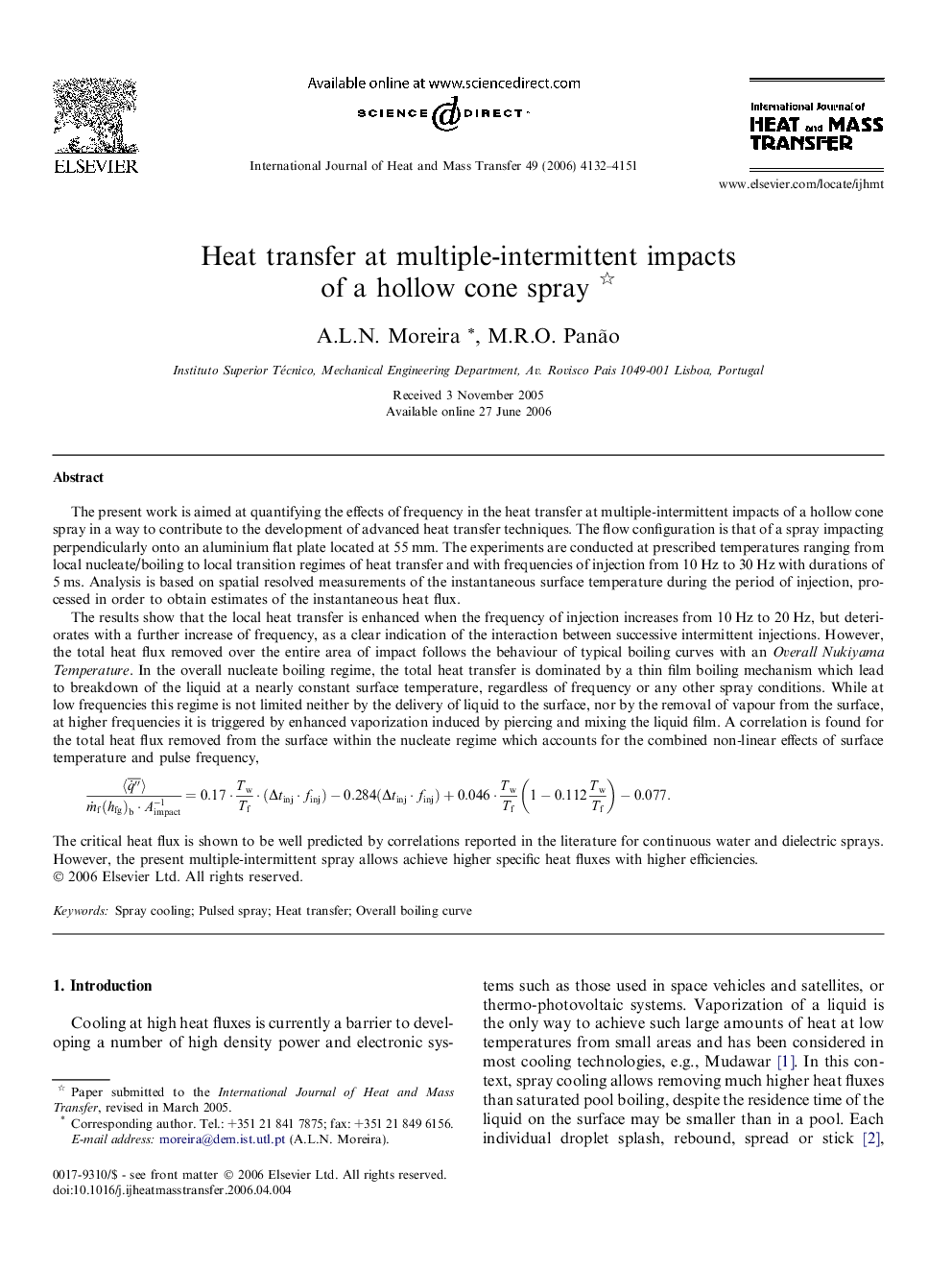| Article ID | Journal | Published Year | Pages | File Type |
|---|---|---|---|---|
| 661644 | International Journal of Heat and Mass Transfer | 2006 | 20 Pages |
Abstract
The results show that the local heat transfer is enhanced when the frequency of injection increases from 10 Hz to 20 Hz, but deteriorates with a further increase of frequency, as a clear indication of the interaction between successive intermittent injections. However, the total heat flux removed over the entire area of impact follows the behaviour of typical boiling curves with an Overall Nukiyama Temperature. In the overall nucleate boiling regime, the total heat transfer is dominated by a thin film boiling mechanism which lead to breakdown of the liquid at a nearly constant surface temperature, regardless of frequency or any other spray conditions. While at low frequencies this regime is not limited neither by the delivery of liquid to the surface, nor by the removal of vapour from the surface, at higher frequencies it is triggered by enhanced vaporization induced by piercing and mixing the liquid film. A correlation is found for the total heat flux removed from the surface within the nucleate regime which accounts for the combined non-linear effects of surface temperature and pulse frequency,ãqËâ³Â¯ãmËf(hfg)b·Aimpact-1=0.17·TwTf·(Îtinj·finj)-0.284(Îtinj·finj)+0.046·TwTf1-0.112TwTf-0.077.The critical heat flux is shown to be well predicted by correlations reported in the literature for continuous water and dielectric sprays. However, the present multiple-intermittent spray allows achieve higher specific heat fluxes with higher efficiencies.
Keywords
Related Topics
Physical Sciences and Engineering
Chemical Engineering
Fluid Flow and Transfer Processes
Authors
A.L.N. Moreira, M.R.O. Panão,
